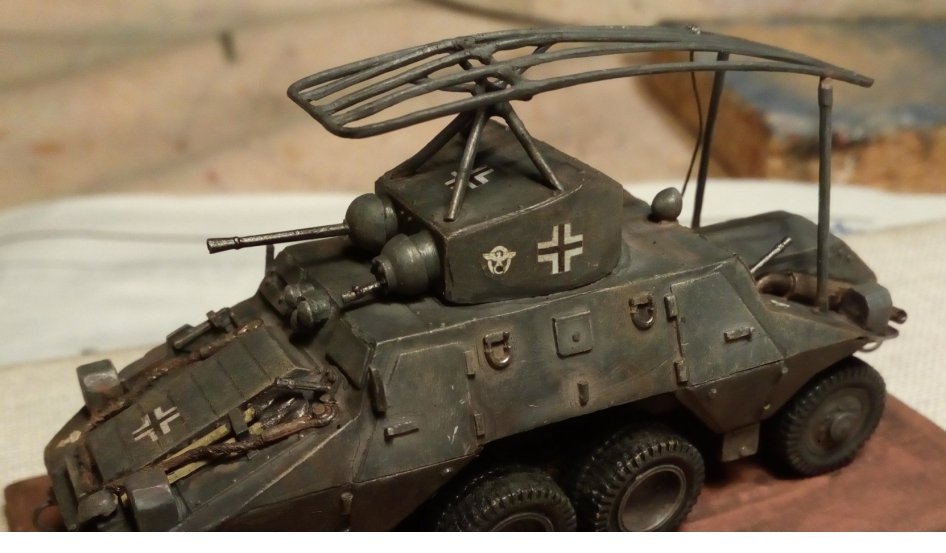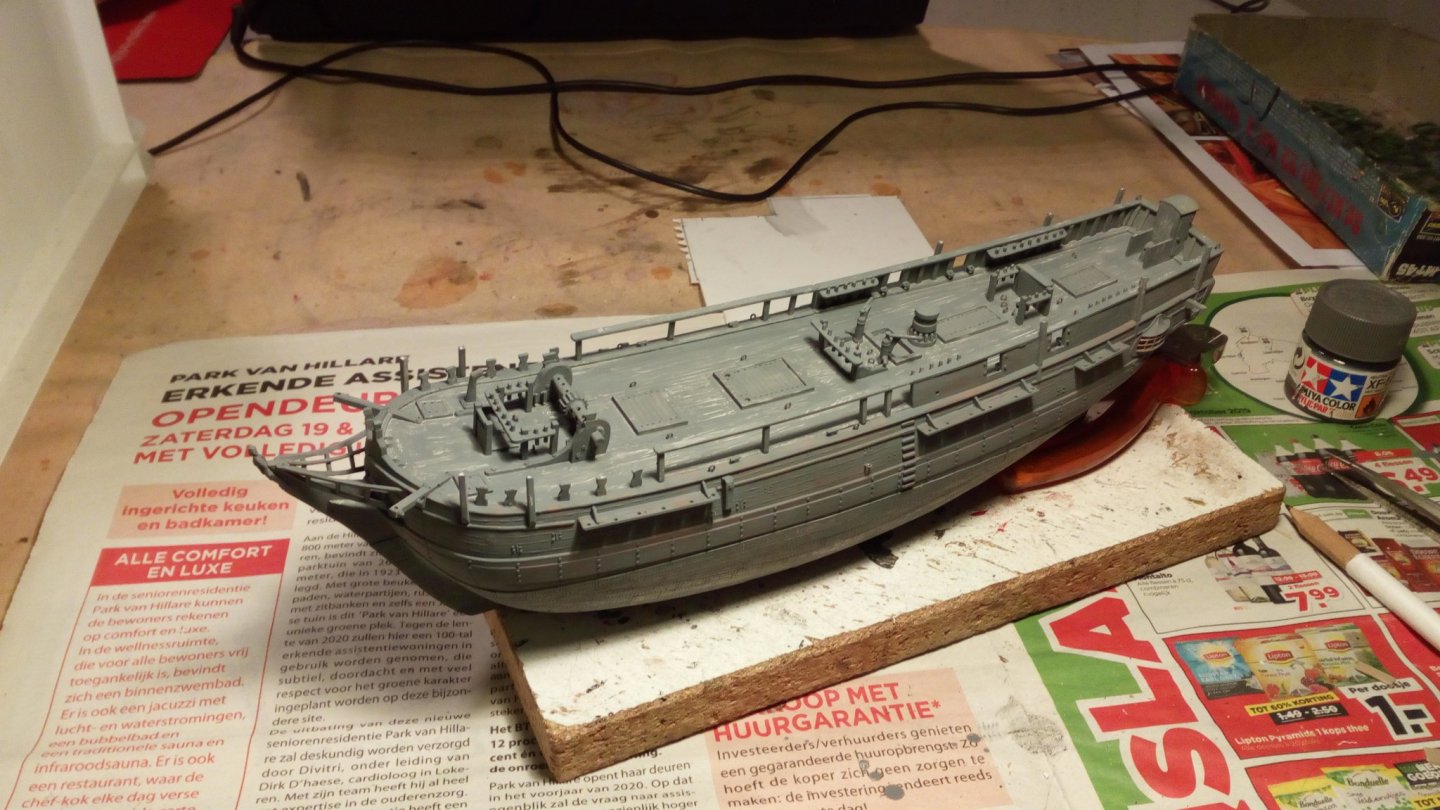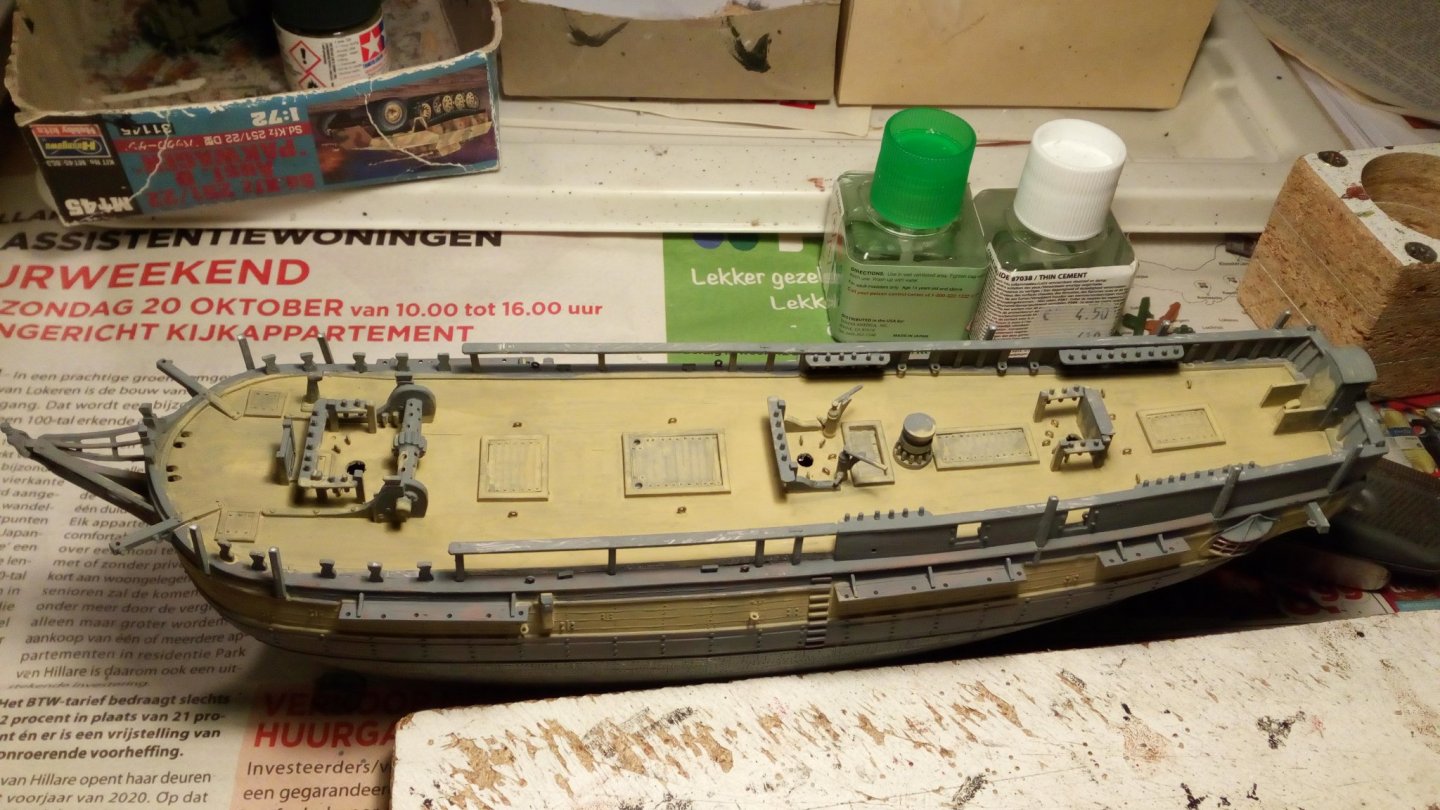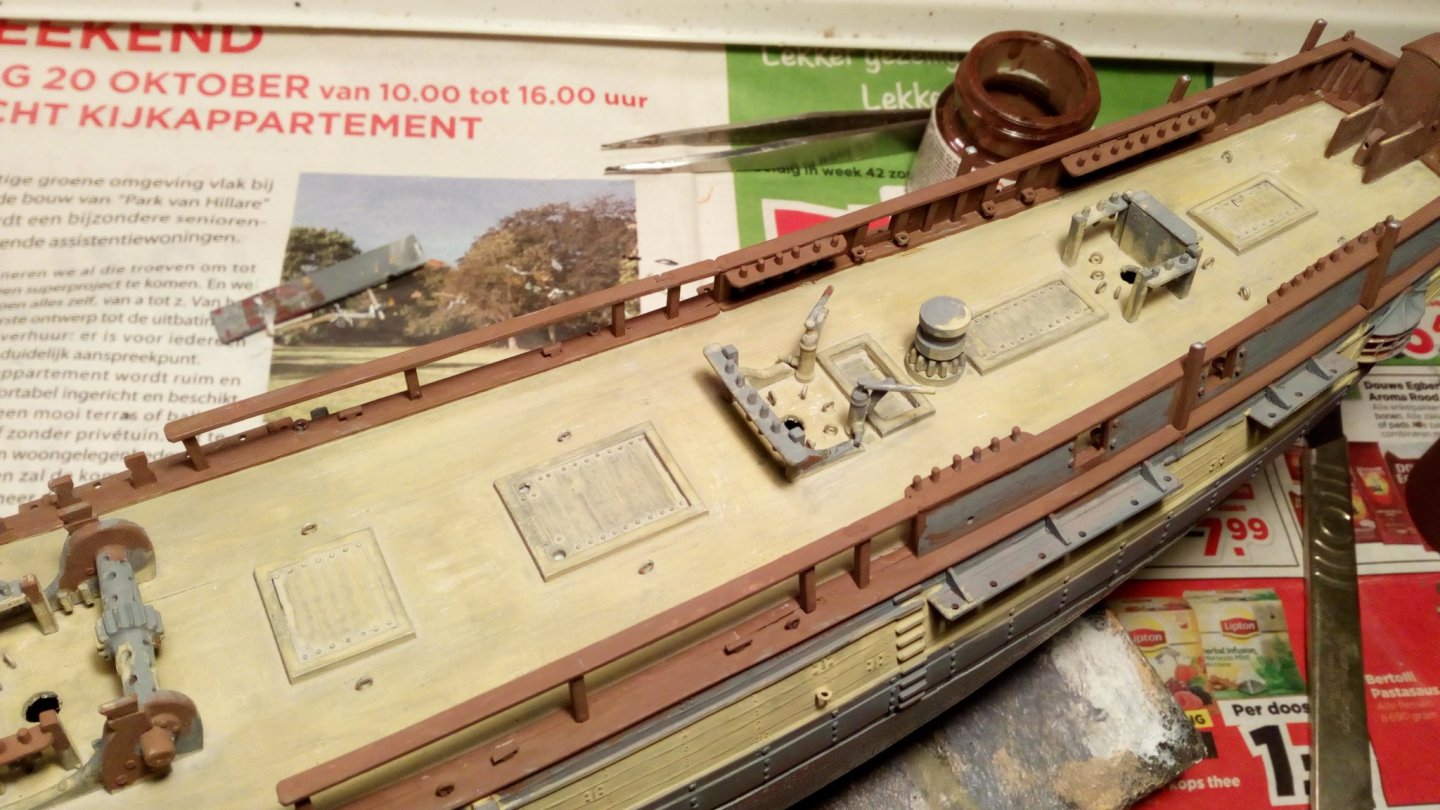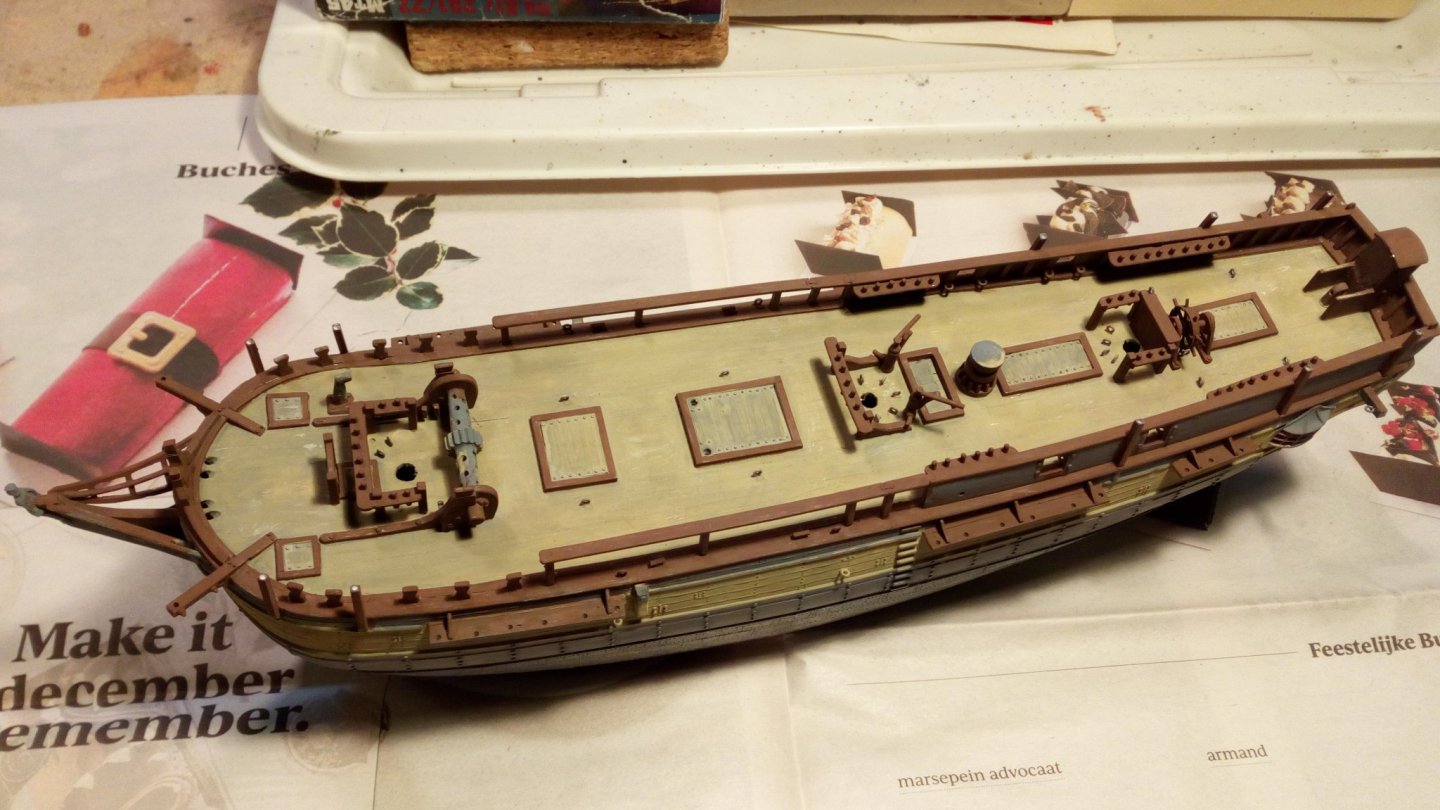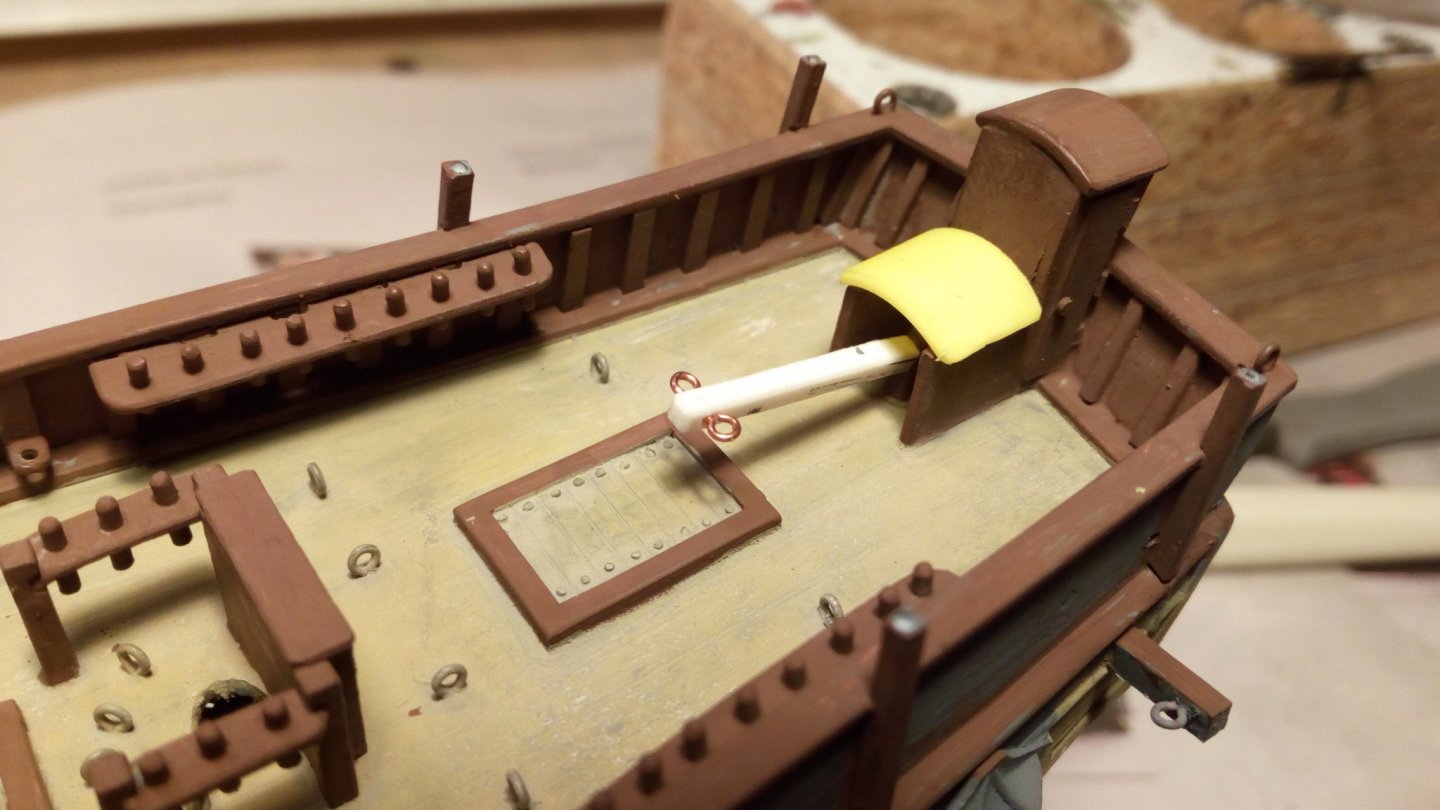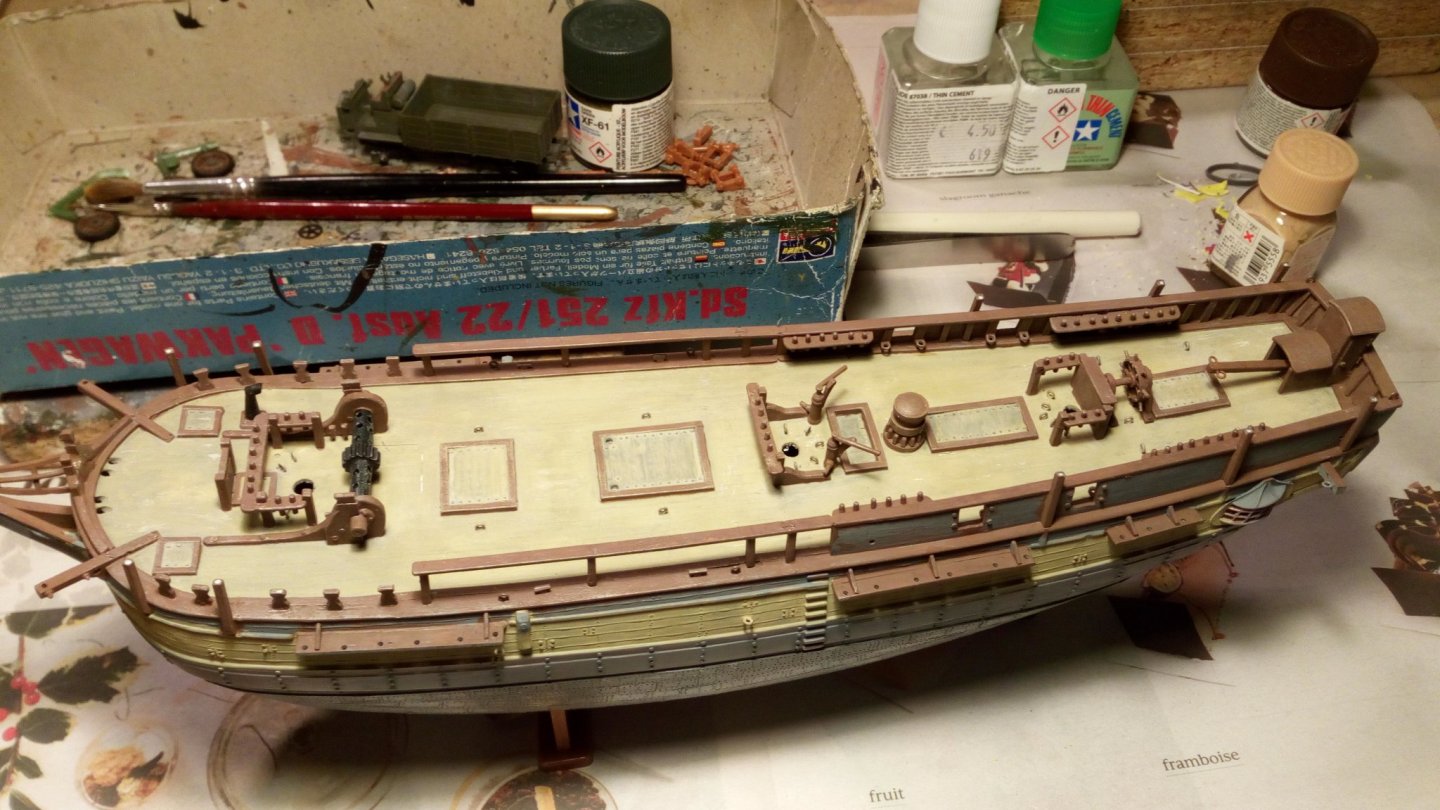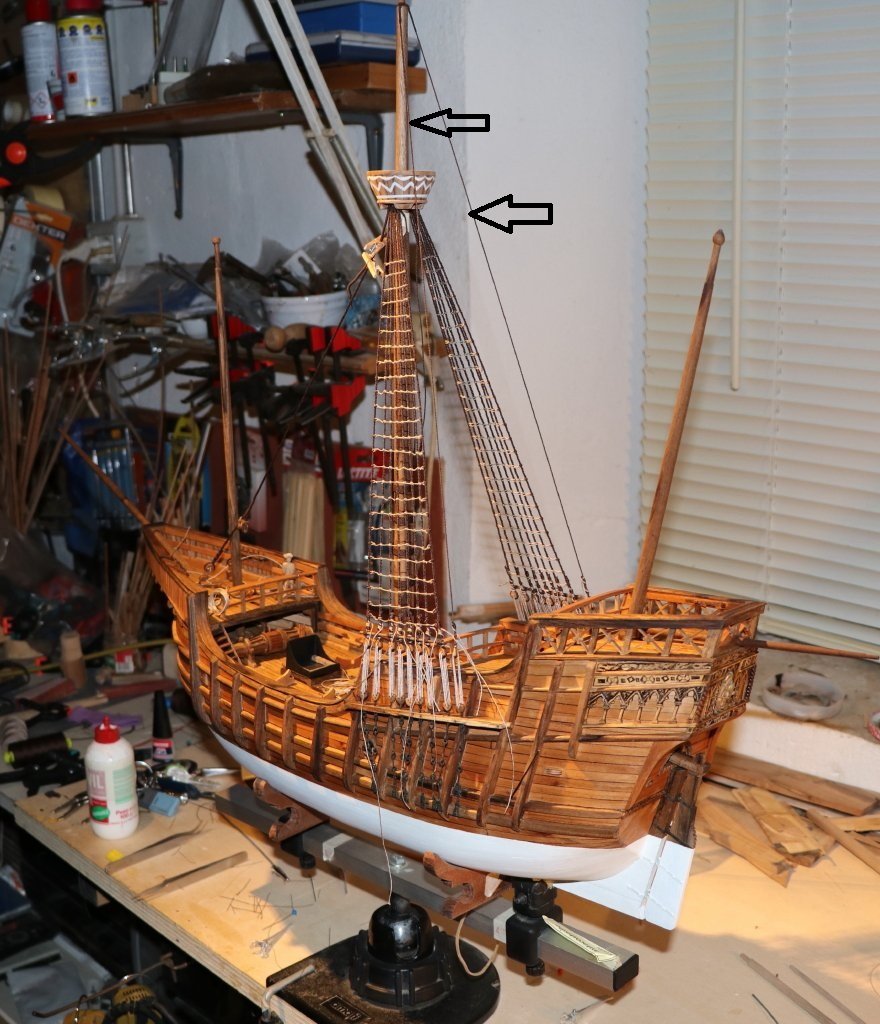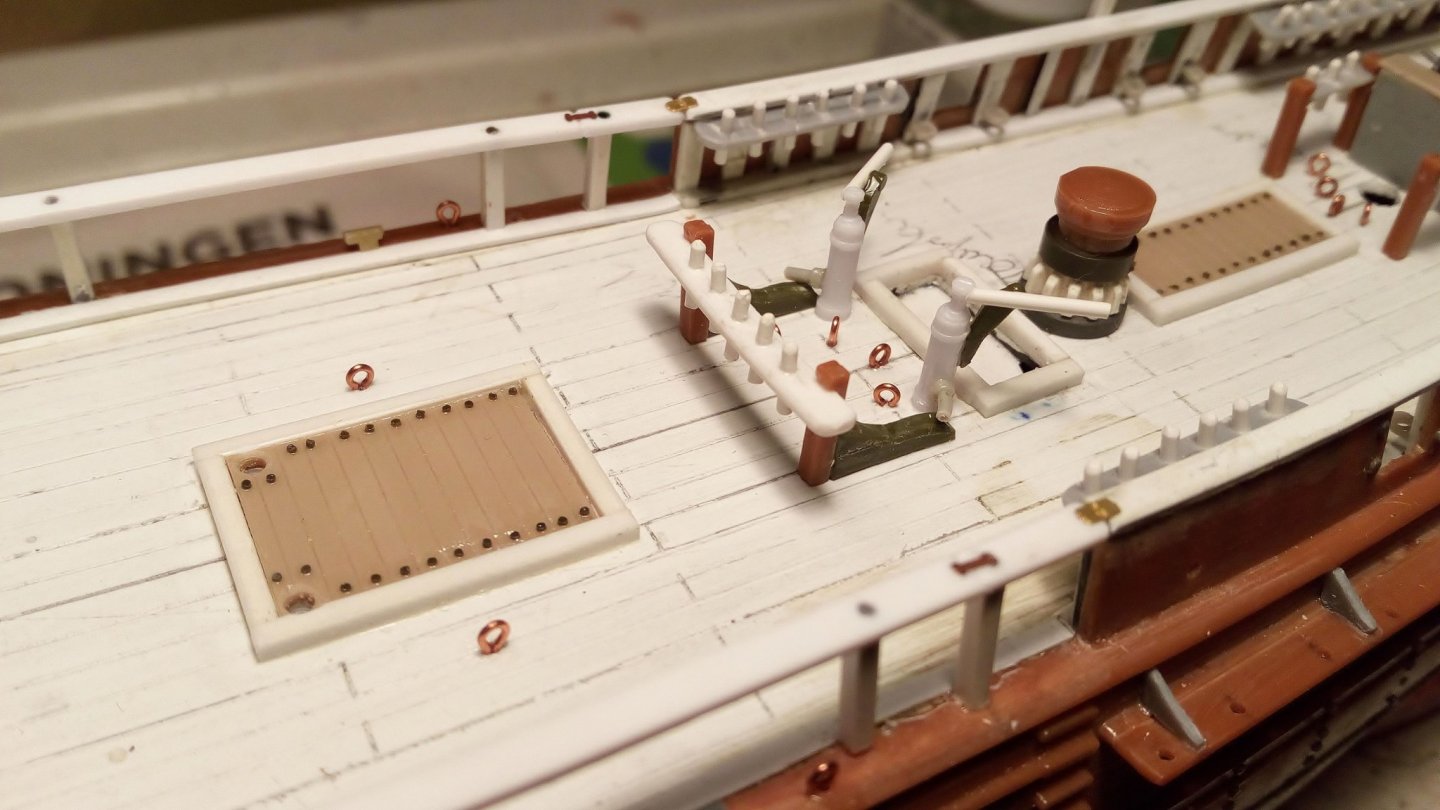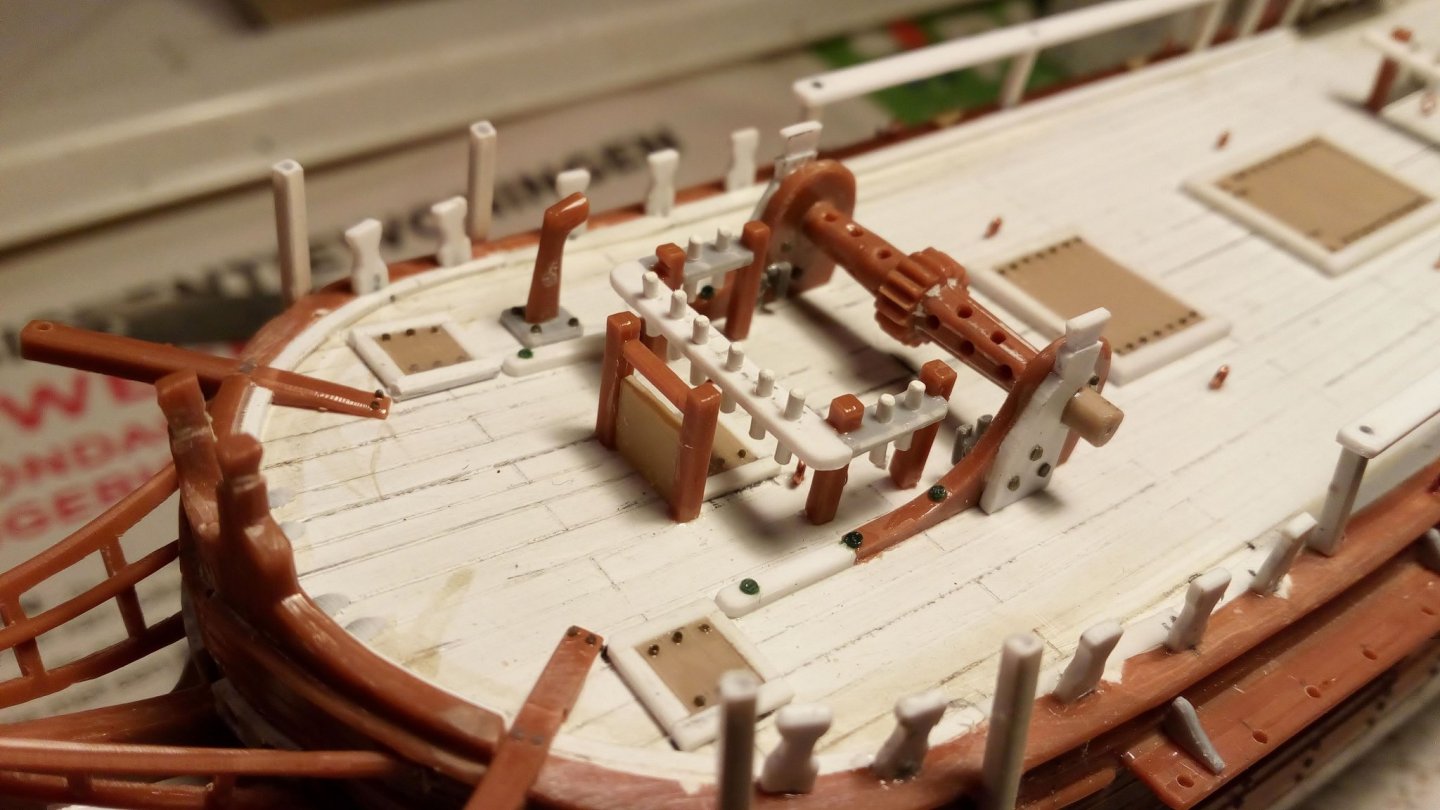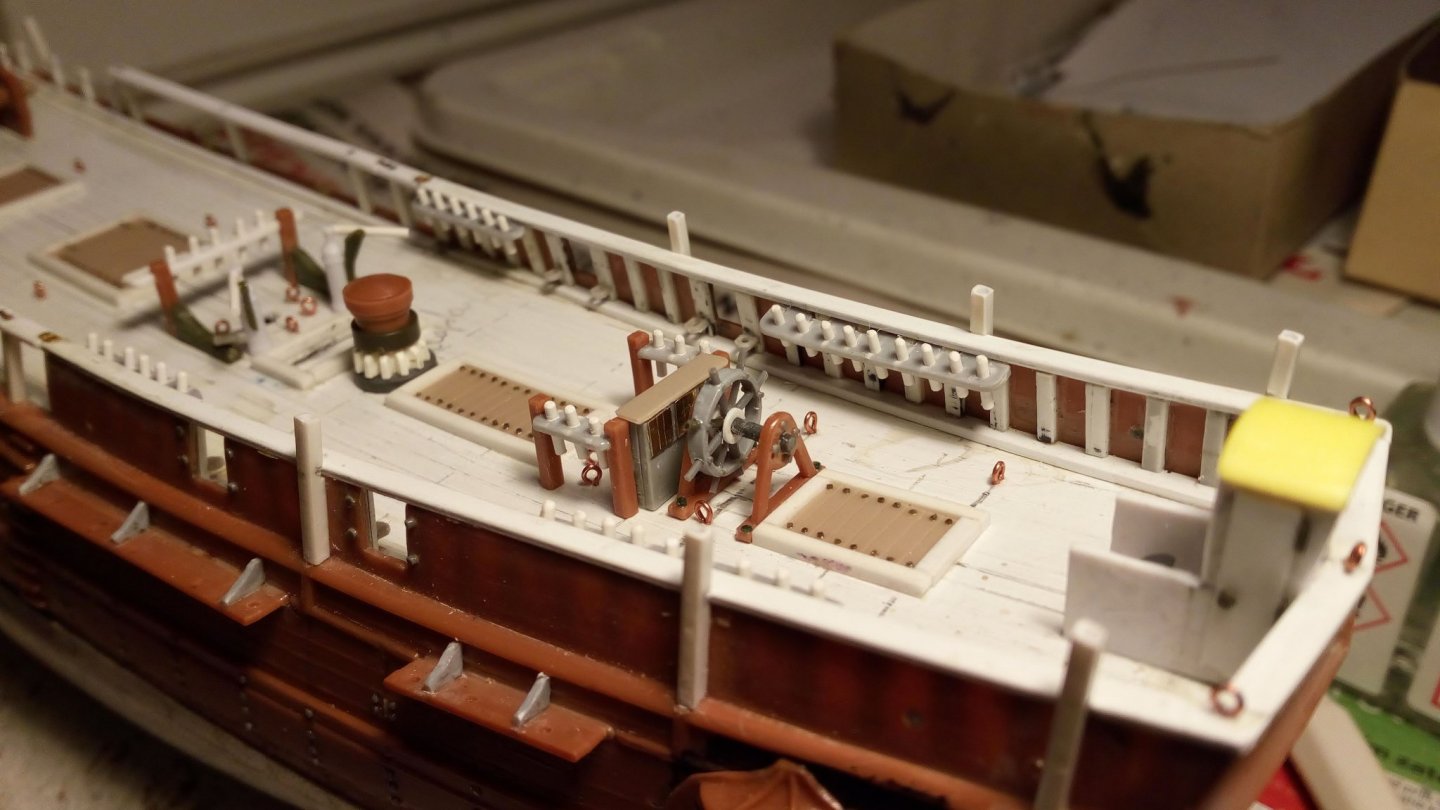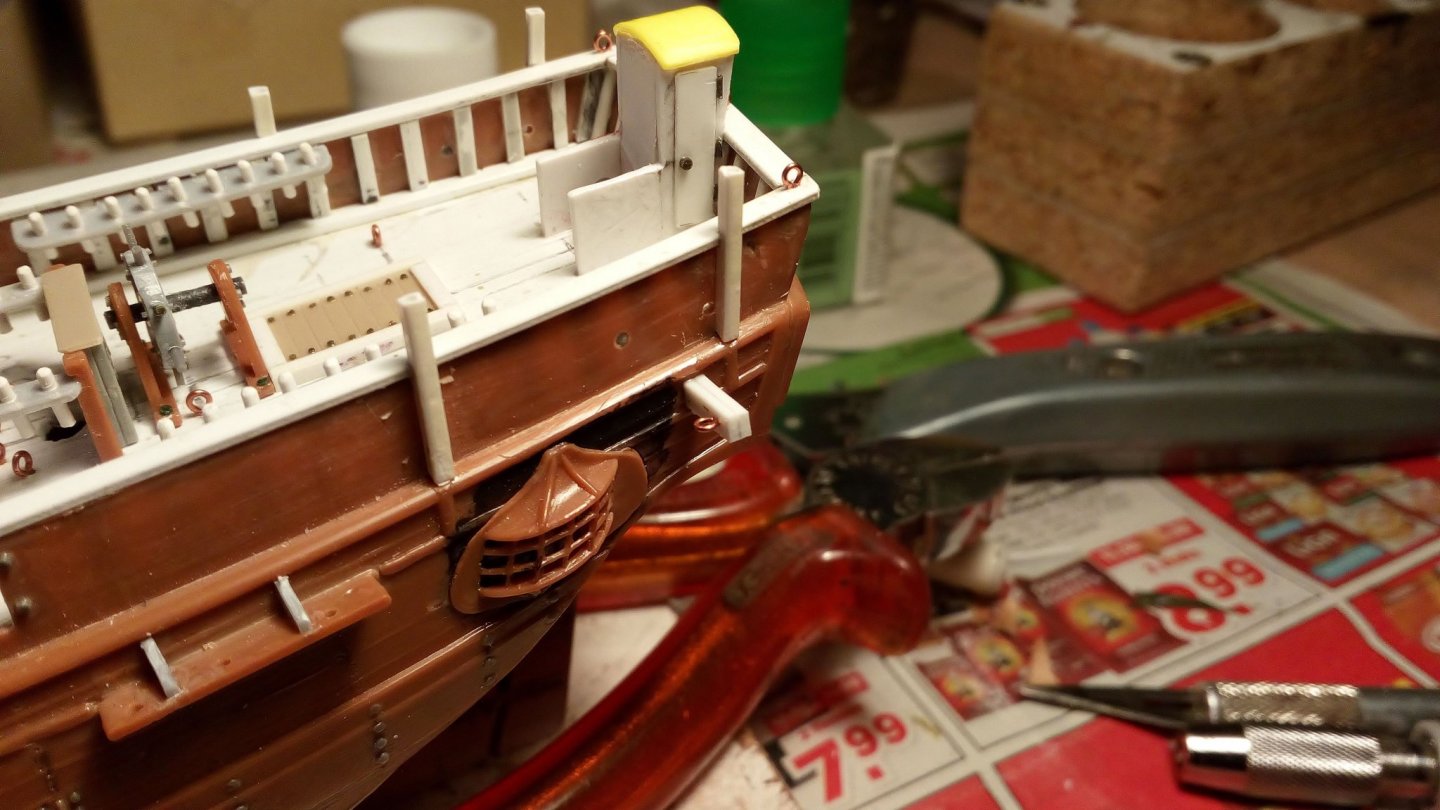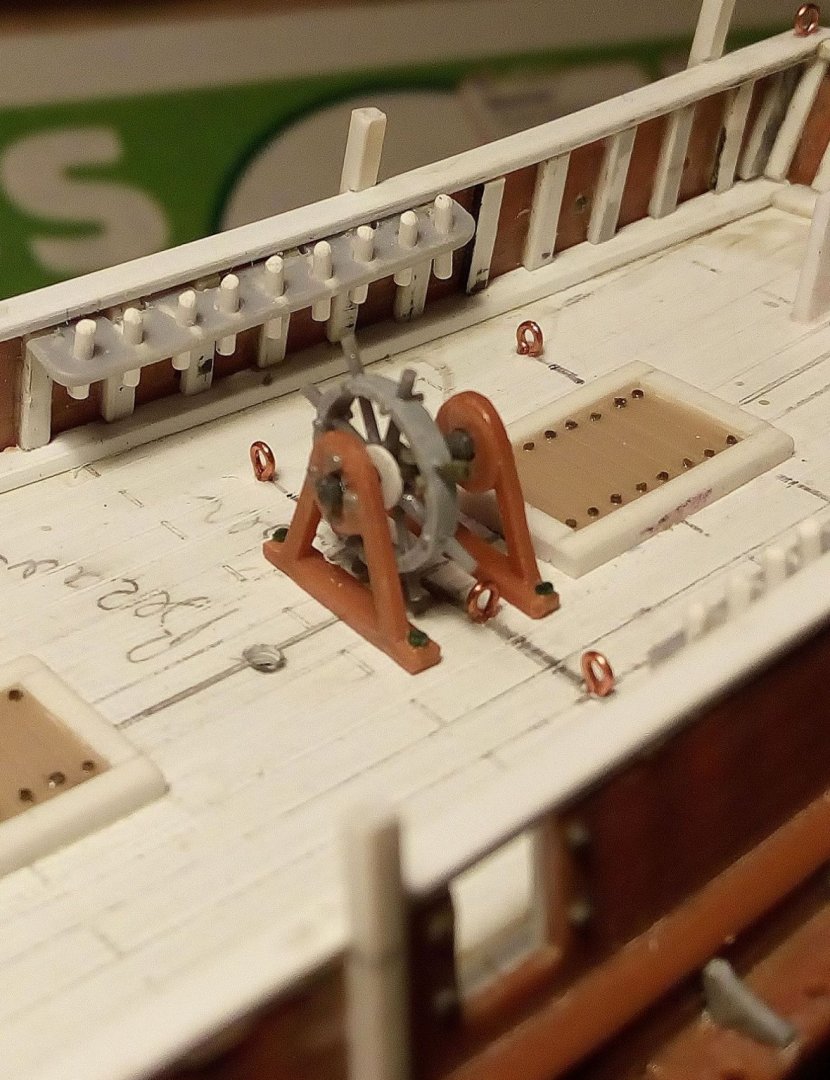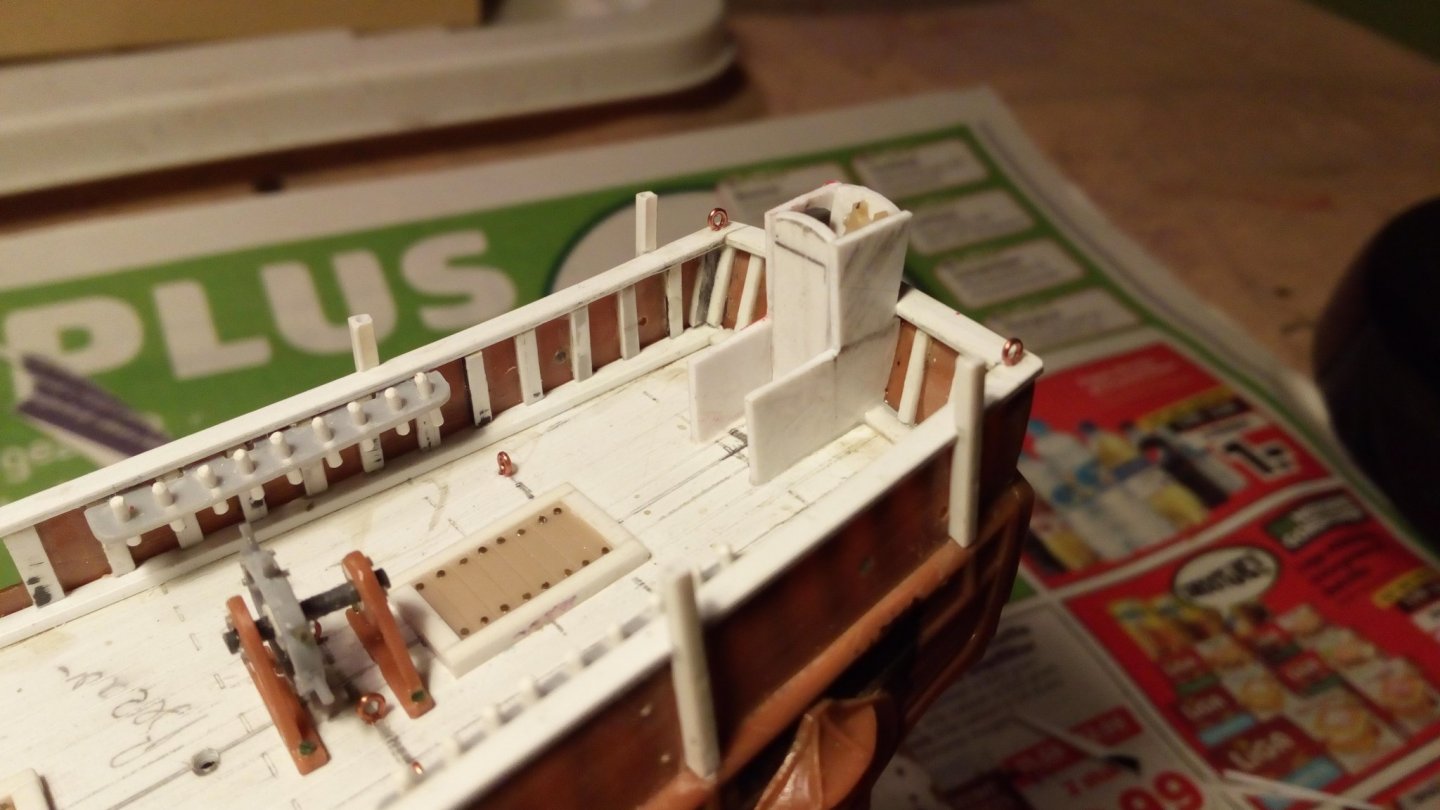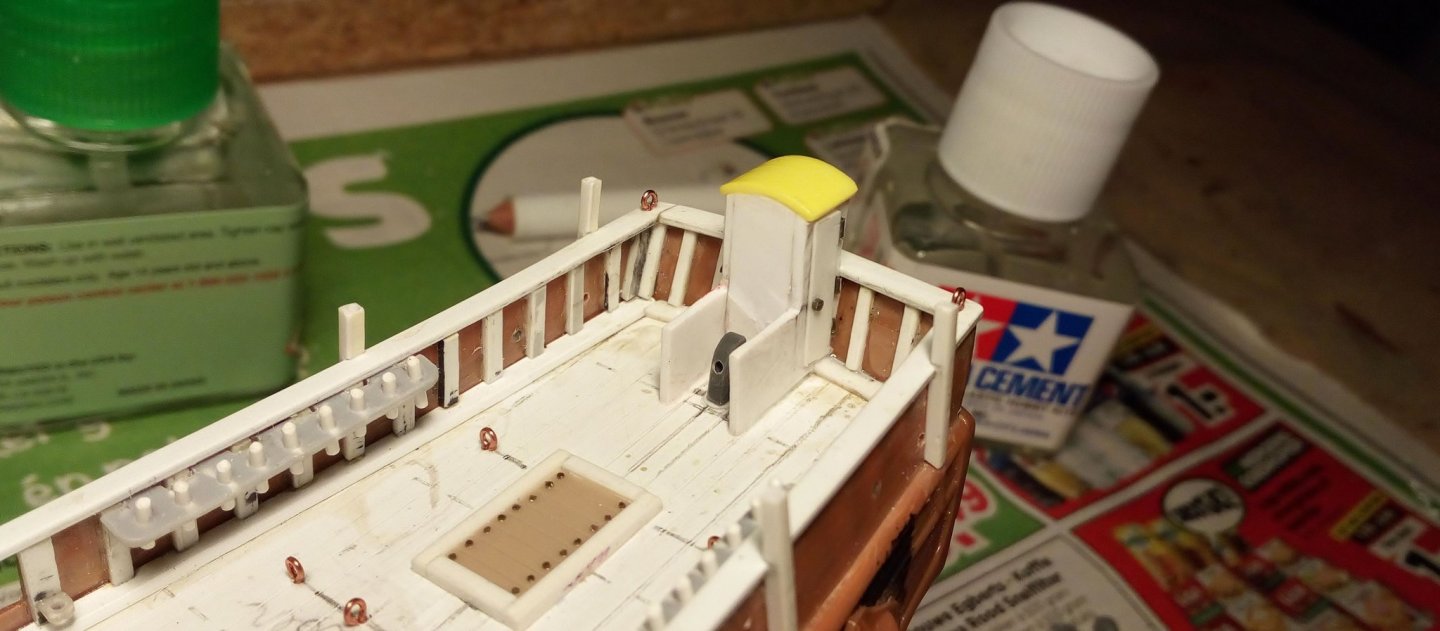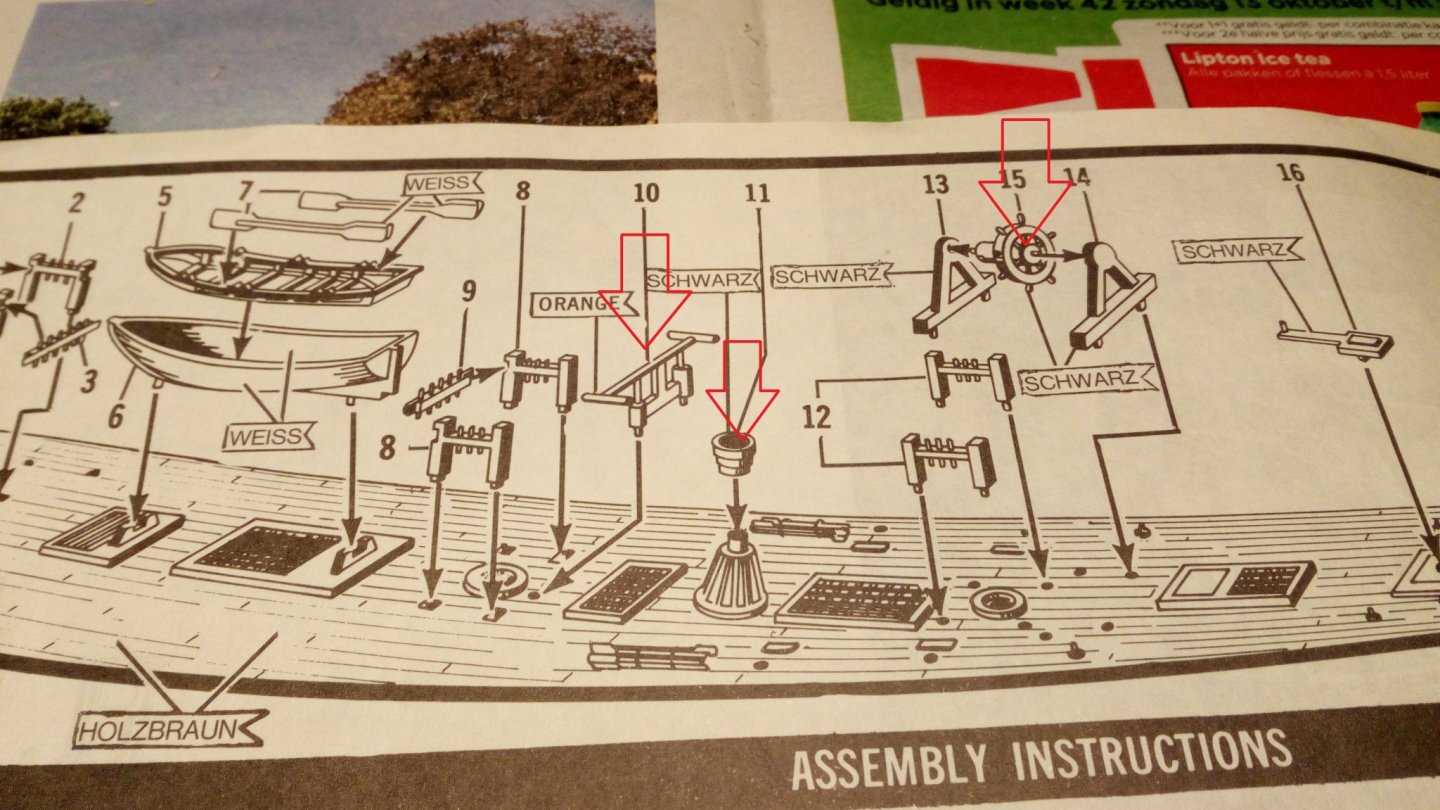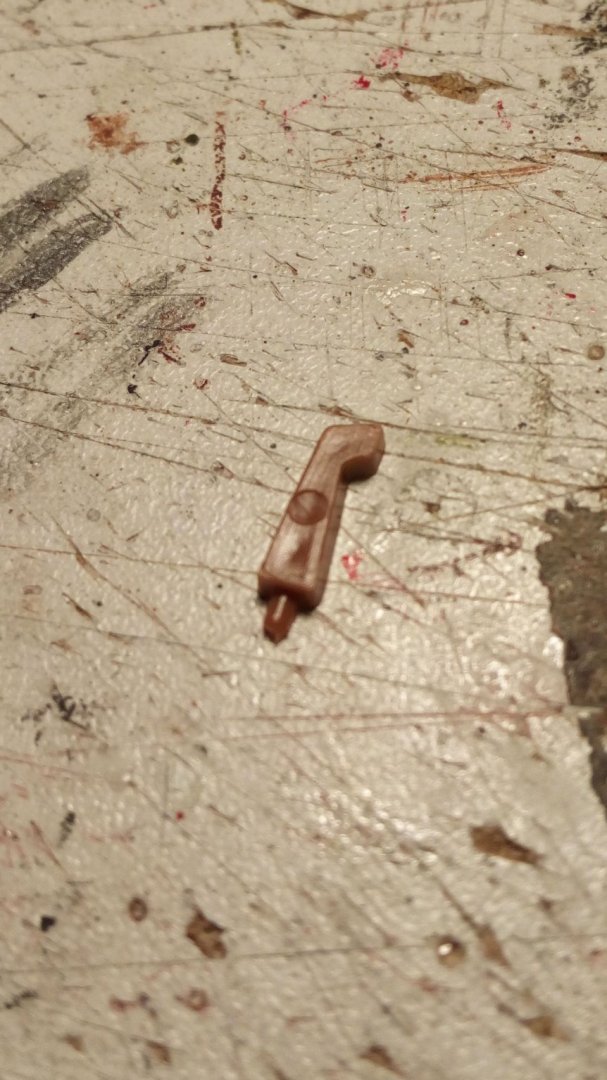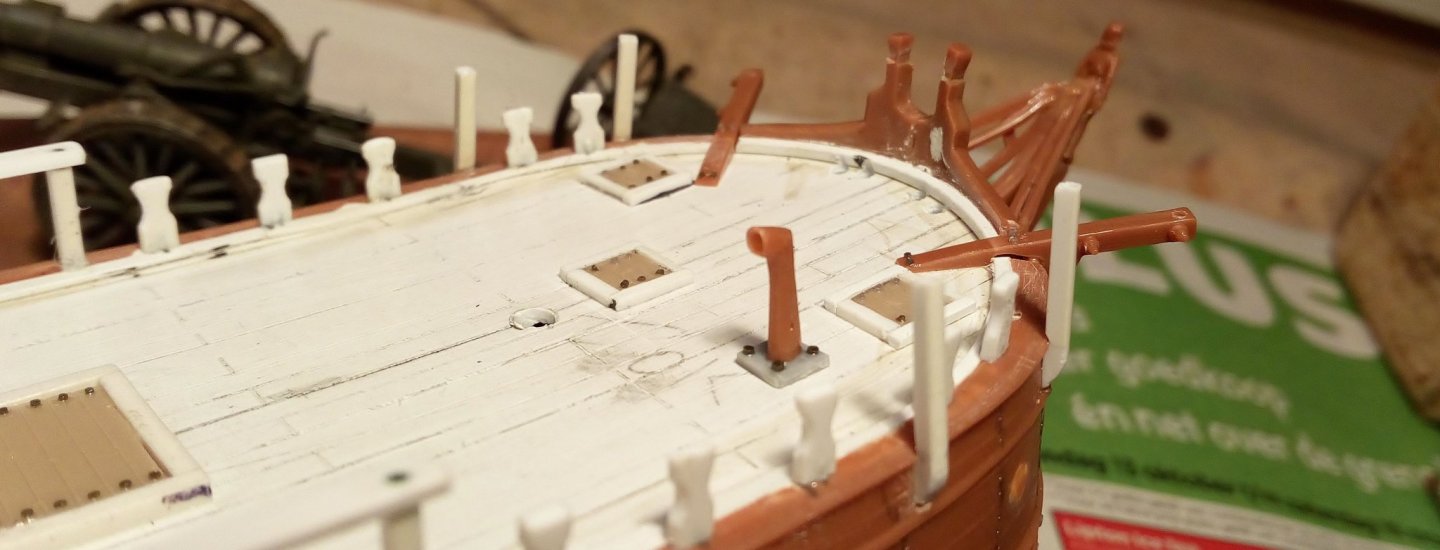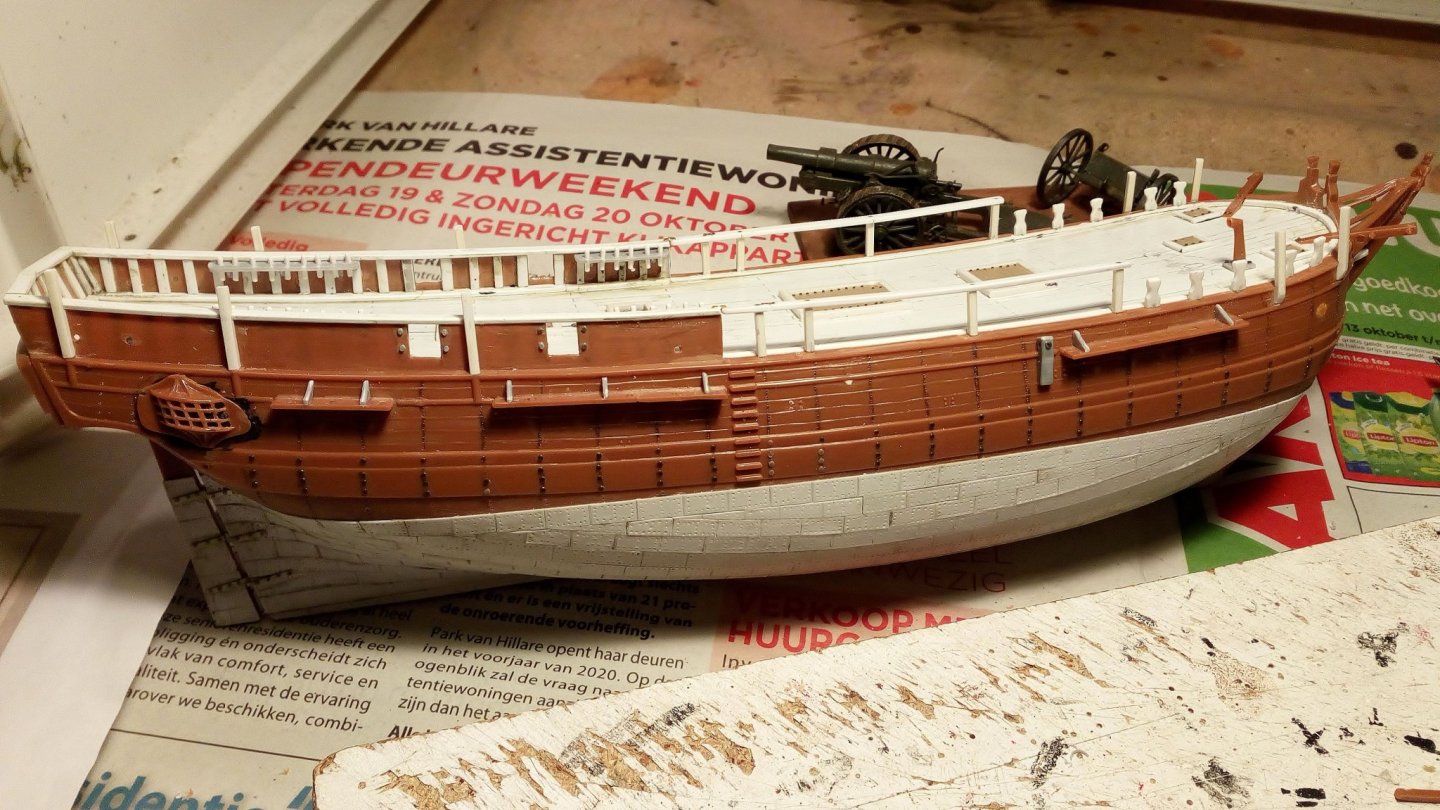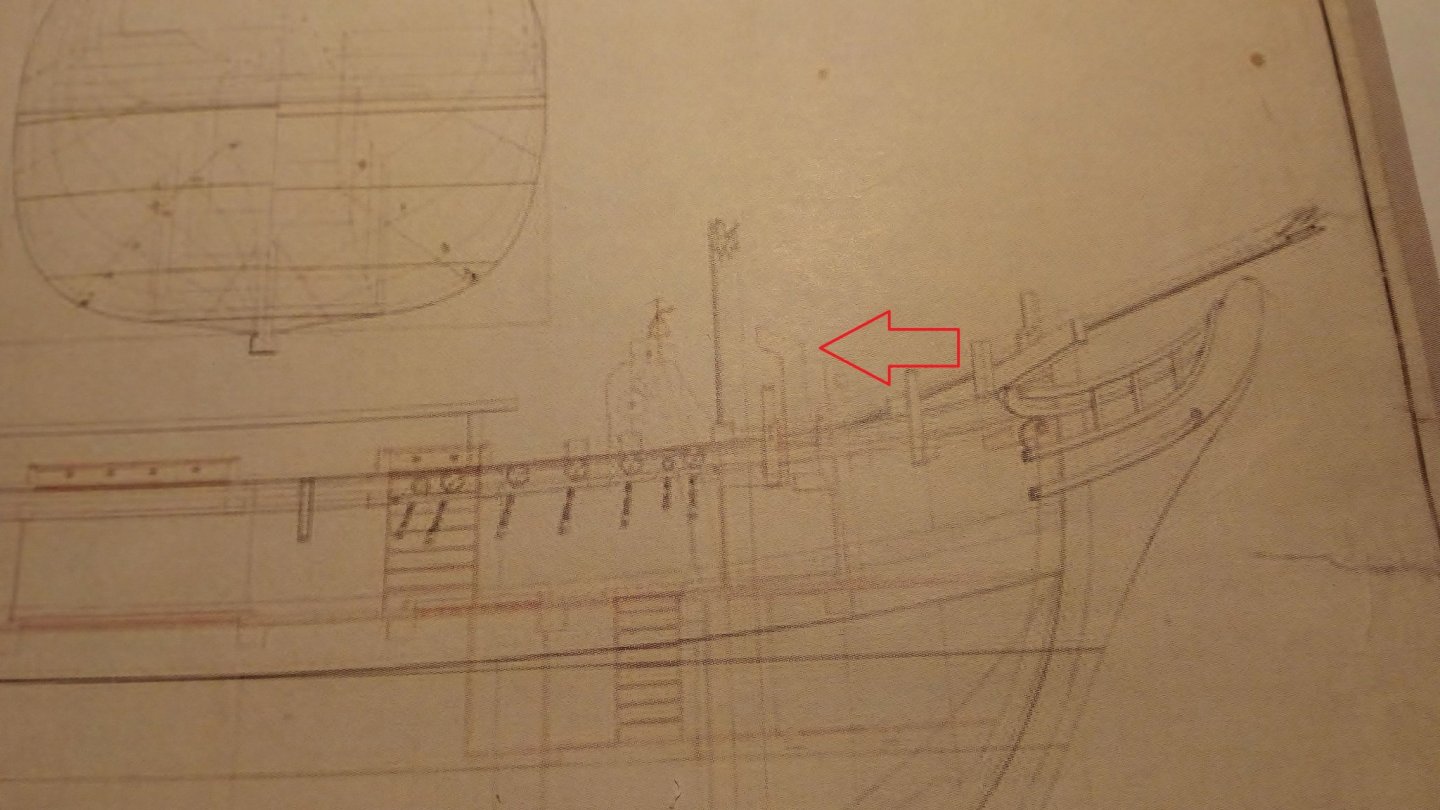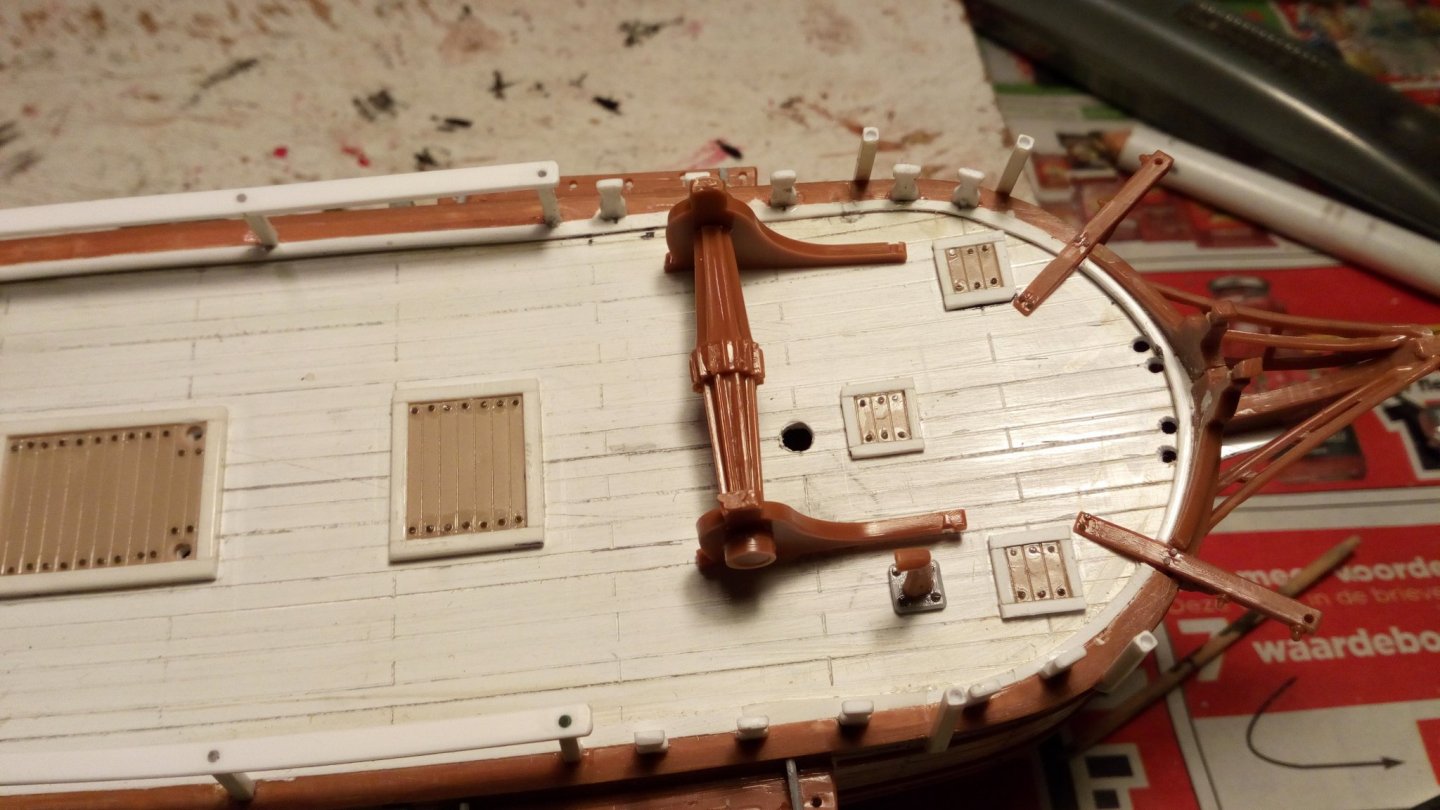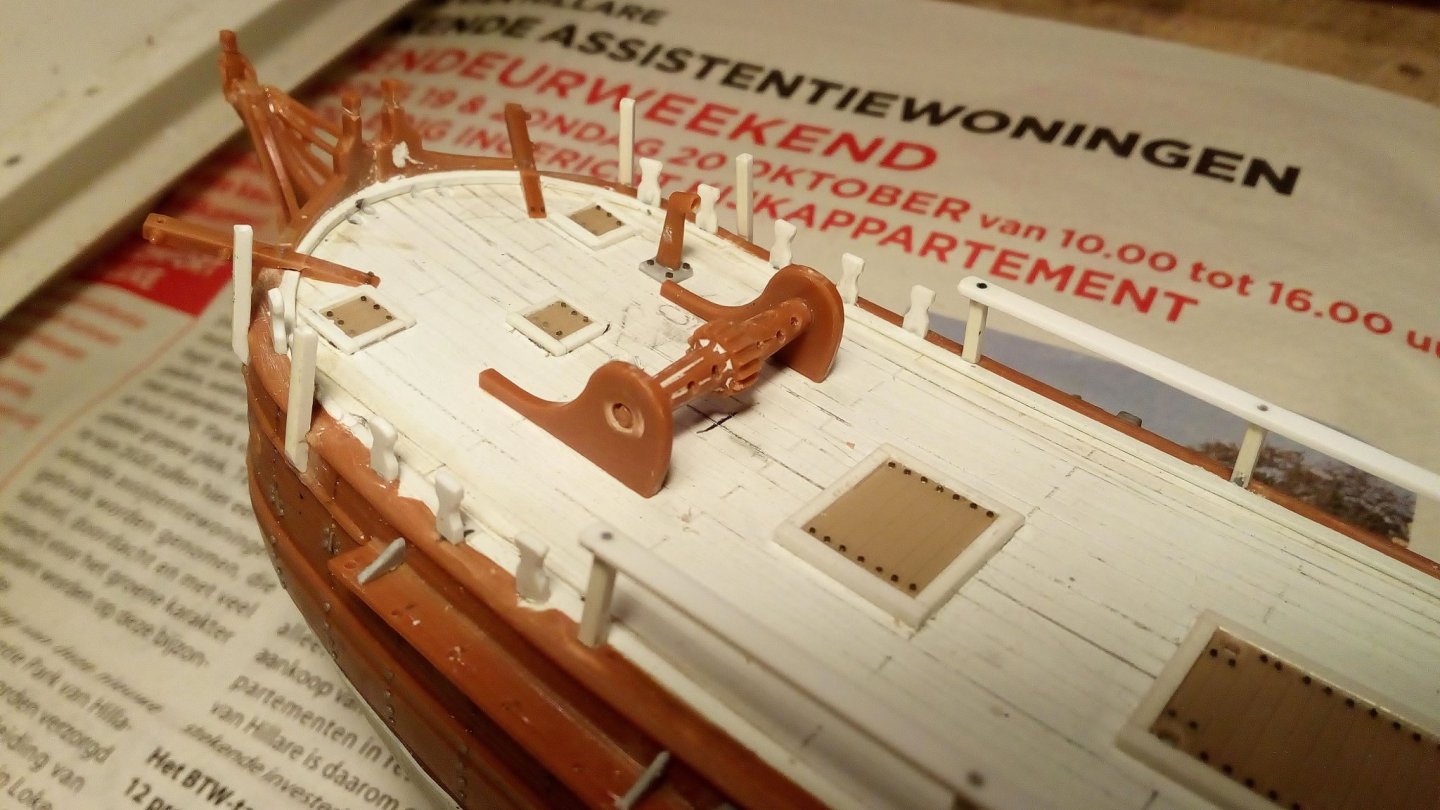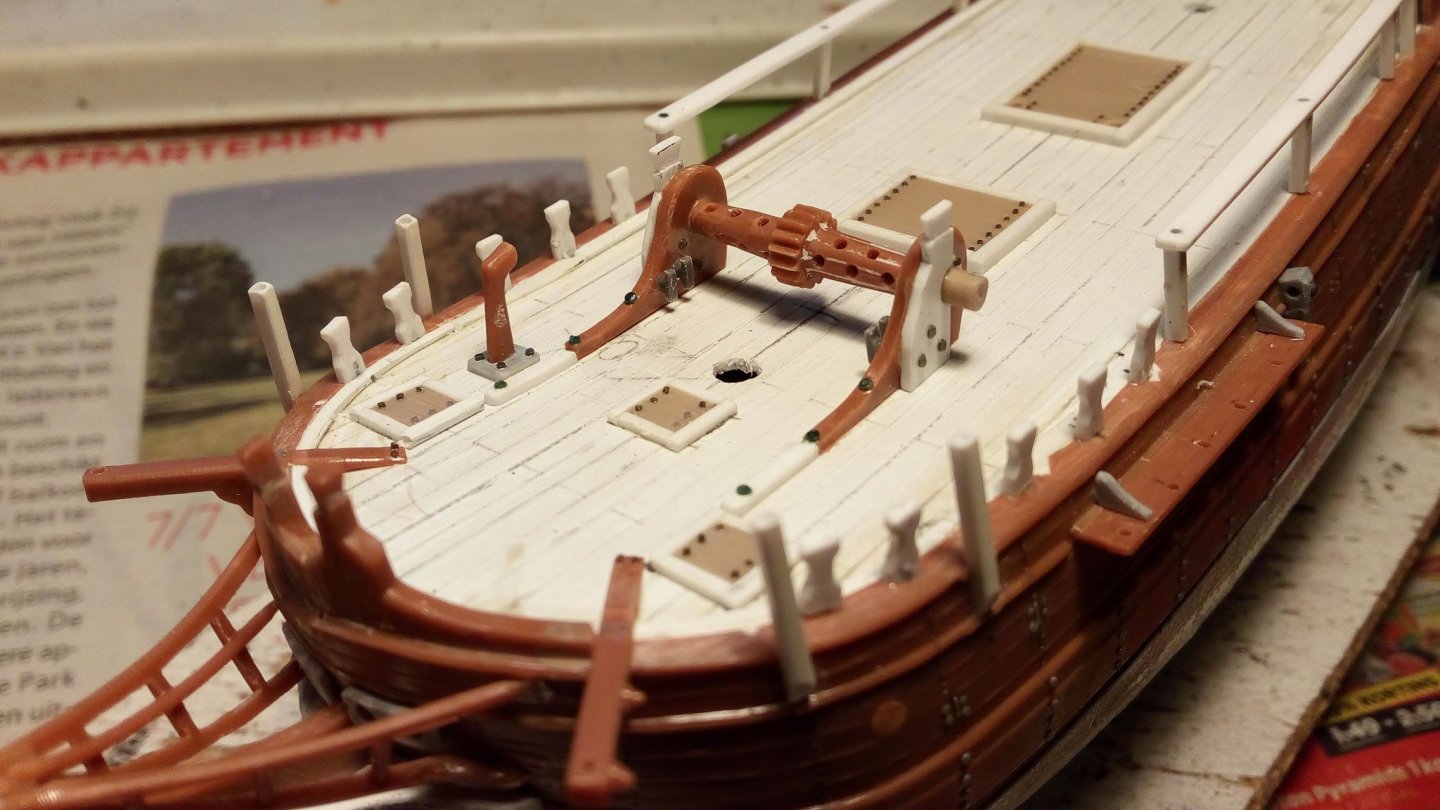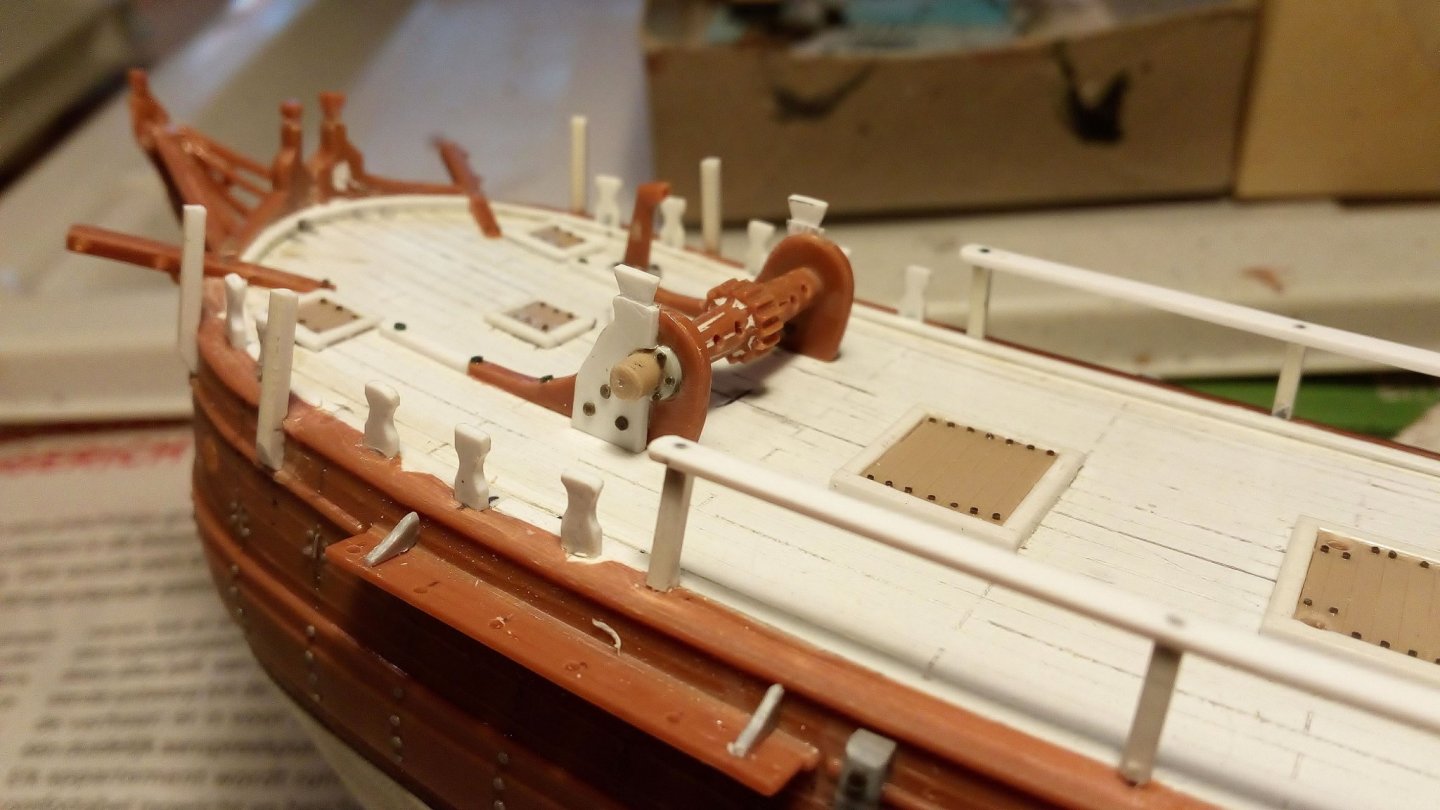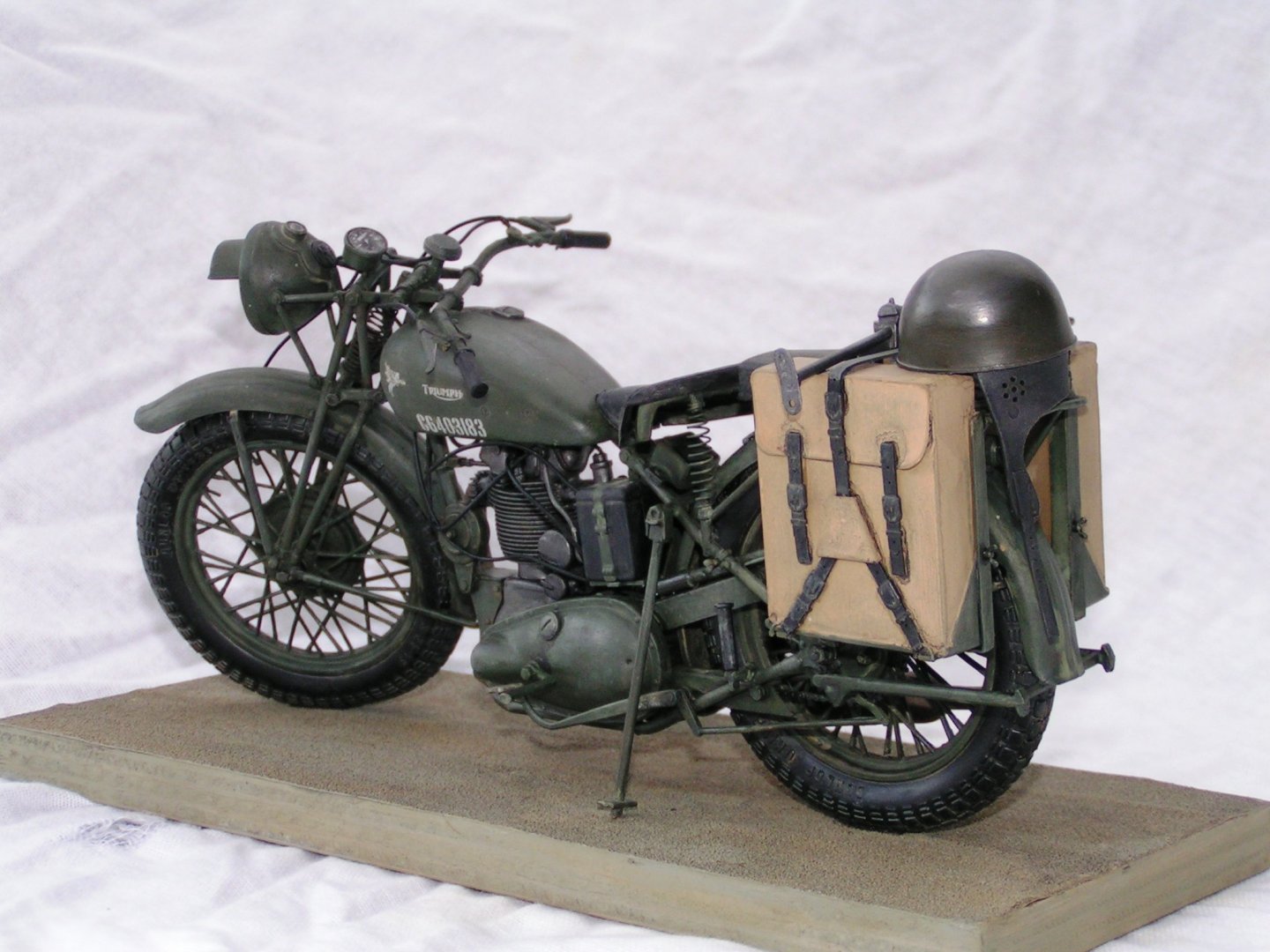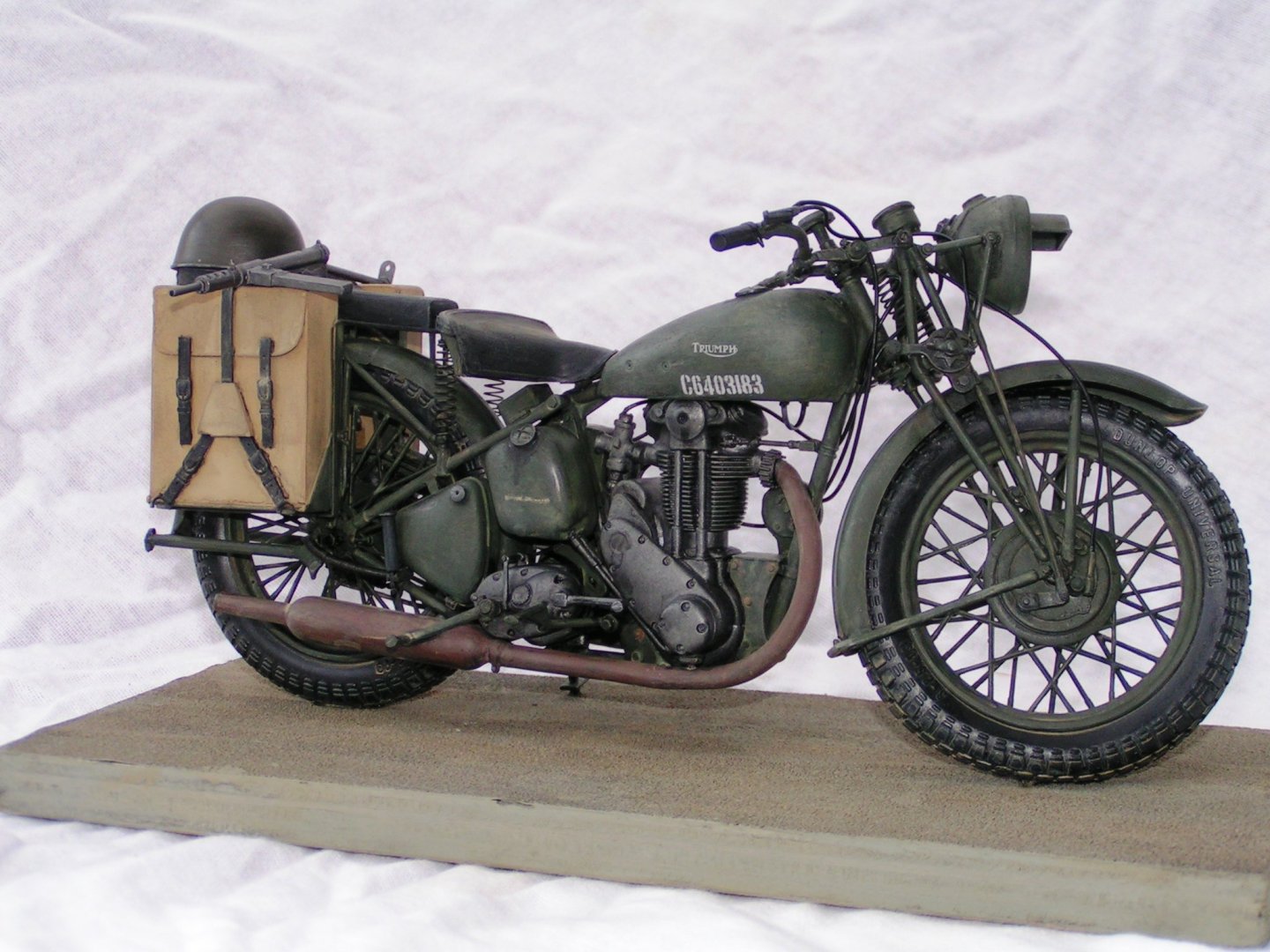-
Posts
4,245 -
Joined
-
Last visited
Content Type
Profiles
Forums
Gallery
Events
Everything posted by Baker
-
Thanks for the likes and nice comments. painting. The last time I painted a plastic ship model was in the early eighties. I only have experience with military models on a 1/72 scale My painting technique will therefore probably be different from other plastic ship models on this forum. First a base layer of diluted light gray over the entire model. Here we go (deck first). The deck gets a few layers of diluted sand yellow (yes sand yellow) Then a dry brushing of light gray and white. And a few wash layers of diluted light gray A layer of reddish-brown for the parts on and around the deck. And a helm for the rudder. Black color on the kitchen vent and part of the windlass. And a drybrush with sand yellow. Not ready yet. To be continued.
-
- 197 replies
-
- santa maria
- carrack
-
(and 1 more)
Tagged with:
-
Small update Added belaying pins around the masts And this Washed with water and soap and ready to start painting. Thanks for following
-
Do not think that modelkits from 16th and 17th century ship models are always correct. "skyward curving decks" The decks are indeed a little curved but not skyward curved some info about armament https://www.academia.edu/20120786/The_Arming_of_Late_16th_century_Merchantmen._A_Masters_Thesis_from_the_Maritime_Archaeology_Programme_University_of_Southern_Denmark Shipbuilding https://nautarch.tamu.edu/pdf-files/Myers-MA 1987.pdf More info: see my Golden Hind build. Or in this book
-
Hello, and
-
Thanks, We had pigeons at home. My father, and I, were "duivenmelkers" translate to English??. My childhood was influenced by pigeons, pigeons, pigeons. So, my first idea was "a dovecote" thanks for the explanation and the nice comments
-
Further progress Made a ship's wheel, a capstan, pumps and a "dovecote" on the stern. All made of leftovers from the partsbox And added eye bolts the original parts A new ship's wheel (not yet glued on the deck) the wheel itself is in the front of the axel and not in the rear as on most model kits the capstan and 2 pumps. The capstan (could be made better, but scale 1/110 is small) There are 2 pumps as on the origal drawing of the ship, and not a chain pump as on this kit. The dovecote. It looks like that this "dovecote" served to store the signal flags. The front part protects the rudder (not yet ready) Thanks for following
-
I'm going to follow this shipbuilding lesson. I will be quiet in the classroom, and pay attention Also did some homework. I have also had to cut down a cherry tree, the suitable pieces are dried and ready for further processing.
- 168 replies
-
Greetings, and Welcome to MSW.
-
Beautiful work Also an interesting site about all units and material of the German Whermacht, the Lufwaffe and the Kriegsmarine (In german) http://www.lexikon-der-wehrmacht.de/inhaltsverzeichnis1.htm 37mm ammo http://www.lexikon-der-wehrmacht.de/Downloads/Downloads.htm For the moment I haven't found anything useful about the cannon itself
-
Welcome, and good luck with your build
-
Great work on this model I am not such an expert in windows on ship models. But this is how I made mine (post 178)
- 2,696 replies
-
- heller
- soleil royal
-
(and 9 more)
Tagged with:
-
Greetings and welcome to MSW
-
Update, The chimney from the kitchen below deck. On most models, the output faces forward. On the old plan it is directed backwards. Original piece. Adjusted and mounted on deck Extra detail on the channels The windlass Original piece. Adjusted and mounted With extra detail
-
Thanks. I think it's a standard helmet. I built this model in the 80s (without help from the internet it was searching and guessing) The 2 figures on motorbikes with the Airfix recovery set in scale 1/76 had roughly the same helmet. That was then my only reference https://www.google.com/search?q=airfix+recovery+set&rlz=1C1SFXN_enBE500BE526&tbm=isch&source=iu&ictx=1&fir=4SoVkQADE-nmUM%3A%2CixGGk9LuLJDy_M%2C_&vet=1&usg=AI4_-kR9S9CH25Ykw9FlDldhKTM74iBSFQ&sa=X&ved=2ahUKEwjhi5-L6_blAhWI66QKHQ1UCO0Q9QEwAnoECAYQCA#imgrc=bX6dobsw-r-wUM:&vet=1 Did a quick search on google, It looks like a real standard issue helmet https://www.google.com/search?q=british+motorcycle+helmets+ww2&rlz=1C1SFXN_enBE500BE526&source=lnms&sa=X&ved=0ahUKEwin3M6-6_blAhVRDOwKHQ_hBokQ_AUIDSgA&biw=1600&bih=757&dpr=1 Ps, If I remember correctly. There are a few difficult construction phases in this model. You can always ask if something is not clear
-
Great models
-
Greetings And
-
Greetings, Patrick
About us
Modelshipworld - Advancing Ship Modeling through Research
SSL Secured
Your security is important for us so this Website is SSL-Secured
NRG Mailing Address
Nautical Research Guild
237 South Lincoln Street
Westmont IL, 60559-1917
Model Ship World ® and the MSW logo are Registered Trademarks, and belong to the Nautical Research Guild (United States Patent and Trademark Office: No. 6,929,264 & No. 6,929,274, registered Dec. 20, 2022)
Helpful Links
About the NRG
If you enjoy building ship models that are historically accurate as well as beautiful, then The Nautical Research Guild (NRG) is just right for you.
The Guild is a non-profit educational organization whose mission is to “Advance Ship Modeling Through Research”. We provide support to our members in their efforts to raise the quality of their model ships.
The Nautical Research Guild has published our world-renowned quarterly magazine, The Nautical Research Journal, since 1955. The pages of the Journal are full of articles by accomplished ship modelers who show you how they create those exquisite details on their models, and by maritime historians who show you the correct details to build. The Journal is available in both print and digital editions. Go to the NRG web site (www.thenrg.org) to download a complimentary digital copy of the Journal. The NRG also publishes plan sets, books and compilations of back issues of the Journal and the former Ships in Scale and Model Ship Builder magazines.

